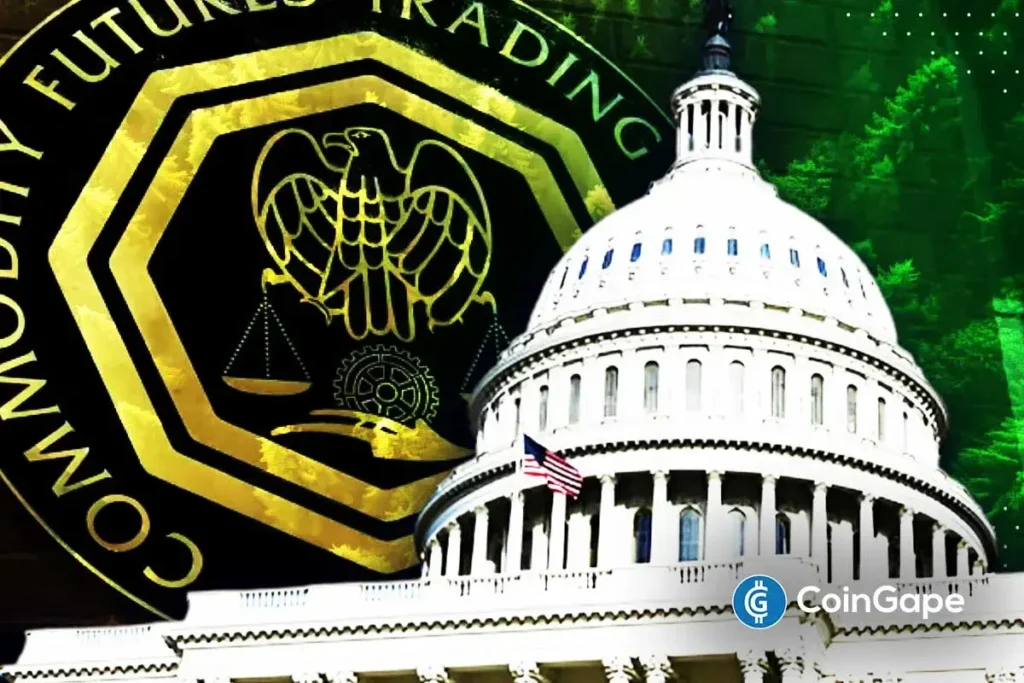Understanding the Upcoming CFTC Crypto Guidance: A Step Towards Regulation
The U.S. Senate Committee on Agriculture is taking significant steps to shape the future of cryptocurrency regulation. The committee plans to release a draft discussion for the Commodity Futures Trading Commission (CFTC) outlining its regulatory approach toward the crypto industry. This initiative comes on the heels of a recently introduced market structure bill by the Senate Banking Committee, which primarily emphasizes the role of the Securities and Exchange Commission (SEC). This article will delve into what the CFTC’s crypto guidance entails, its implications for regulatory coherence, and the future landscape of cryptocurrency in the United States.
The CFTC’s Role in Regulation
The upcoming guidance from the CFTC is poised to clarify the Commission’s regulatory responsibilities regarding digital assets. According to journalist Eleanor Terrett, the Senate Agriculture Committee is working diligently to prepare this discussion draft for an early September rollout. Notably, the focus of the Senate Banking Committee’s bill is on the SEC’s jurisdiction, indicating an intent to delineate regulatory responsibilities between these two agencies. The CFTC is expected to assert that digital assets are to be classified as commodities, thus expanding its oversight in conjunction with the SEC. This development marks a crucial step toward creating a clear and unified regulatory framework for the burgeoning crypto industry.
A Bipartisan Approach
The efforts by the Agriculture Committee also aim for a bipartisan draft, garnering contributions from key figures, including Democratic Senator Amy Klobuchar. This cooperative spirit signifies a broader recognition of the necessity for coherent crypto regulation across party lines. With the White House urging Congress to finalize market structure legislation by September—in light of the recently passed GENIUS Act—the urgency is palpable. The bipartisan approach could facilitate wider acceptance and a more efficient legislative process, ultimately benefiting both regulators and market participants.
Integration of CFTC and SEC Jurisdiction
The earlier draft of the crypto market structure bill outlines that both the CFTC and SEC will collaborate to draft rules applicable to crypto entities operating under their jurisdiction. Specifically, the CFTC will determine market structures concerning digital assets that qualify as commodities, while the SEC will oversee those regarded as securities. This collaborative dynamic could result in a more streamlined process for crypto firms looking to comply with regulations. Furthermore, the legislation proposes that regulatory decisions related to crypto will be made within a definitive timeframe—specifically, within 270 days of a completed application. Such timelines could enhance operational efficiencies for crypto businesses navigating the regulatory landscape.
Challenges Ahead
Despite the outlined plans and timelines, challenges remain in achieving a cohesive regulatory approach. The Banking Committee has actively sought input on whether the market structure bill appropriately delineates responsibilities between the SEC and CFTC concerning digital assets. As the Senate drafts converge, uncertainty persists over whether the Senate will pursue its version of the CLARITY Act or incorporate key provisions from the House’s iteration. This ambiguity could impact the speed and effectiveness of regulatory implementation, making it crucial for policymakers to clarify jurisdictional distinctions as soon as possible.
Future Considerations for the Crypto Landscape
The upcoming CFTC crypto guidance and its integration with the SEC’s framework will fundamentally shape the future of cryptocurrency in the U.S. As these regulatory discussions unfold, market participants must stay informed about the developments to ensure compliance and capitalize on new opportunities. Effective regulation will not only protect investors but also foster innovation within the crypto landscape. The aim is to create an environment that balances consumer protection with the need for growth and technological advancement in the digital asset space.
Conclusion
The impending release of the CFTC’s crypto guidance highlights an essential progress in the quest for a well-regulated cryptocurrency framework in the United States. Through a bipartisan effort, the Senate Agriculture Committee seeks to establish clear roles for both the CFTC and SEC, ultimately benefiting the industry and its stakeholders. As regulators prepare to outline their strategies, all eyes are on Congress to harmonize these efforts with the overarching objective of fostering a secure yet innovative crypto market. Stakeholders—including investors, developers, and regulatory bodies—must remain vigilant and engaged during this transformative period for the cryptocurrency ecosystem.


